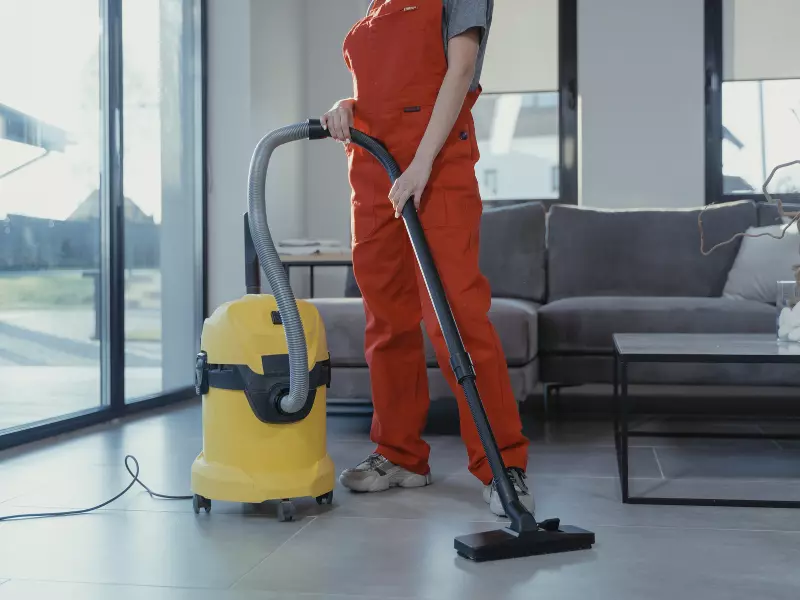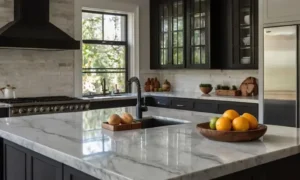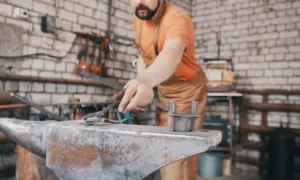How Thick Are Granite Countertops? Granite countertops are a popular choice for kitchens and bathrooms...
Read MoreThe Ultimate Guide on How to Polish Marble Floors and Tiles
How to polish marble floors? Although marble floors are a magnificent addition to any house or structure, they can eventually lose their lustre and become bland. Your marble floors should be polished in order to regain their original brilliance. Yet, many people are not aware of the correct procedures and techniques needed to efficiently polish marble floors.
In this comprehensive guide, we will provide step-by-step instructions on how to polish marble floors, countertops, and tile.
Although marble floors are a magnificent addition to any house or structure, they can eventually lose their lustre and become bland. Your marble floors should be polished in order to regain their original brilliance.
What is Marble and Why is it Popular?

The natural stone known as marble has long been used in construction and the arts. As limestone or dolomite recrystallizes under pressure, a specific type of metamorphic rock emerges extreme pressure and heat.
Marble is a common material for floors, worktops, sculptures, and other decorative uses because of its distinctive veining and patterns. The most well-liked marble varieties include Crema Marfil, Statuario, Carrara, and Calacatta.
Other finishes for marble include polished, honed, and leathered. Due to its sturdiness, elegance, and classic appeal, marble flooring is a preferred option for building and house owners.
Marble Floor Installation is a popular choice for home and building owners.
Benefits of Polishing Marble
Polishing marble offers several benefits, including:
- Improved Appearance: Polishing marble can enhance its natural beauty, bringing out its unique veining and patterns.
- Increased Durability: Polishing can make marble more resistant to scratches and other types of damage.
- Easier Maintenance: Polished marble surfaces are easier to clean and maintain than unpolished surfaces.
- Protection from Stains: Polishing can help seal the pores of the marble, making it more resistant to stains and spills.
- Increased Property Value: Well-maintained and polished marble surfaces can add value to a property and enhance its overall appeal.
Tools and Equipment Needed for Polishing Marble.
The tools and equipment needed for polishing marble floors and surfaces include:
- Floor polisher or hand-held buffer
- Diamond polishing pads of various grits
- Wet/dry vacuum cleaner
- Marble sealer
- Microfiber cloths
- Soft-bristled brush
- Water and cleaning solution
- Safety equipment such as gloves and goggles.
How to Prepare Marble Floors, Countertops, and Tile for Polishing.
To prepare marble floors, countertops, and tile for polishing, follow these steps:
- Clear the surface of any debris or loose dirt.
- Clean the surface thoroughly with a neutral pH cleaner and water.
- Allow the surface to dry completely.
- Repair any cracks, chips, or damage to the surface.
- Search for and, if feasible, get rid of any stains or discolorations.
- Decide on the level of polish desired and choose the appropriate grit diamond polishing pad.
- Attach the polishing pad to the floor polisher or handheld buffer.
- Apply water or polishing solution to the surface.
- Begin polishing, starting with the lowest grit pad and working up to the highest.
- Wash the area with water, then let it air dry.
- Apply a marble sealer to protect the surface and enhance its shine.
Keep in mind that the preparation procedure can change based on the type and state of the marble surface being polished.
How to Polish Marble Floors by Hand
Step-by-Step Guide to Polishing Marble Floors by Hand:
- Clear the floor of any furniture or debris.
- Clean the floor with a neutral pH cleaner and water, and allow it to dry.
- Choose the appropriate diamond polishing pad or abrasive powder for the level of polish desired.
- Apply the polishing pad or powder to a soft-bristled brush or buffing pad.
- Rub the surface in a circular motion, applying even pressure.
- Change to a higher grit pad or powder and repeat the process until the desired level of polish is achieved.
- Vacuum or sweep the floor to remove any residue.
- Apply a marble sealer to protect the floor and enhance its shine.
Tips for Polishing Marble Floors by Hand:
- Choose the appropriate grit diamond polishing pad or abrasive powder for the level of polish desired.
- To prevent scratching the surface, use a buffing pad or soft-bristled brush.
- Apply even pressure while rubbing the surface in a circular motion.
- Work in small sections to ensure even polishing and avoid missing any spots.
- Use a microfiber cloth to remove any residue between polishing steps.
- Use safety equipment such as gloves and goggles to protect yourself while polishing by hand.
How to Polish Marble Countertops
Step-by-Step Guide to Polishing Marble Countertops:
- Clear the countertop of any items or debris.
- Clean the countertop with a neutral pH cleaner and water, and allow it to dry.
- Choose the appropriate diamond polishing pad for the level of polish desired.
- Attach the pad to a handheld buffer or polisher.
- Apply water or polishing solution to the countertop.
- Begin polishing, working in small sections and using a circular motion.
- Change to a higher grit pad and repeat the process until the desired level of polish is achieved.
- To get rid of any leftovers, wipe the countertop with a microfiber cloth.
- Apply a marble sealer to protect the countertop and enhance its shine.
Tips for Polishing Marble Countertops:
- Use the appropriate grit diamond polishing pads to avoid damaging the marble surface.
- Keep the countertop wet while polishing to avoid scratches and maintain a consistent finish.
- Work in small sections to ensure even polishing and avoid missing any spots.
- Use a handheld buffer or polisher to reach all areas of the countertop.
- Use a circular motion while polishing to avoid swirl marks and create a uniform finish.
- Use safety equipment such as gloves and goggles to protect yourself while polishing the countertop.
How to Polish Marble Tile
Step-by-Step Guide to Polishing Marble Tile:
- Clear the area of any furniture or debris.
- Clean the marble tile with a neutral pH cleaner and water, and allow it to dry.
- Choose the appropriate diamond polishing pad for the level of polish desired.
- Attach the pad to a handheld buffer or polisher.
- Apply water or polishing solution to the marble tile.
- Begin polishing, working in small sections and using a circular motion.
- Change to a higher grit pad and repeat the process until the desired level of polish is achieved.
- To eliminate any residue, wipe the tile with a microfiber cloth.
- Apply a marble sealer to protect the tile and enhance its shine.
Tips for Polishing Marble Tile:
- Use the appropriate grit diamond polishing pads to avoid damaging the tile surface.
- Keep the tile wet while polishing to avoid scratches and maintain a consistent finish.
- Work in small sections to ensure even polishing and avoid missing any spots.
- Use a handheld buffer or polisher to reach all areas of the tile.
- Use a circular motion while polishing to avoid swirl marks and create a uniform finish.
- Use safety equipment such as gloves and goggles to protect yourself while polishing the tile.
How to Maintain Polished Marble
To maintain polished marble, follow these simple steps:
- Wipe up spills immediately to prevent staining.
- Clean regularly with a neutral pH cleaner and water to remove dirt and debris.
- Use a marble-specific cleaning solution periodically to remove any build-up or stains.
- Avoid using abrasive cleaners or acidic substances on the marble surface.
- Use coasters and placemats to protect the marble from scratches and etching.
- Apply a marble sealer every 6 to 12 months to protect the marble from damage and maintain its shine.
Common Mistakes to Avoid When Polishing Marble
Here are some common mistakes to avoid when polishing marble:
- Using abrasive cleaners or tools that can scratch or damage the marble surface.
- Not using the appropriate diamond polishing pads for the level of polish desired.
- Applying too much pressure or polishing for too long in one spot, which can create uneven areas or burn marks.
- Allowing water or polishing solution to dry on the marble surface, which can cause staining or etching.
- Failing to clean the marble surface thoroughly before polishing, which can trap dirt and debris and create a hazy finish.
- Using acidic substances such as vinegar or lemon juice, which can etch the marble surface and create a dull appearance.
- Skipping the sealing process after polishing, which can leave the marble vulnerable to damage and staining.
Safety Precautions When Polishing Marble
Here are some safety precautions to take when polishing marble:
- To protect yourself from chemicals or debris, put on the proper personal protective equipment, such as gloves and eye protection.
- Make sure the workspace is well ventilated to avoid breathing in dust or fumes.
- Follow all manufacturer’s instructions when using polishing tools and equipment.
- Use caution when handling heavy or sharp equipment, such as floor machines or diamond polishing pads.
- Turn off all equipment and unplug electrical cords before changing polishing pads or cleaning the equipment.
- Keep polishing solution and chemicals out of reach of children and pets.
- If skin or eyes are contacted, thoroughly rinse with water and seek medical attention if required.
Conclusion
Transform polished marble surfaces in your house that look brand new. With the help of our detailed instructions, you can learn how to set up and maintain marble floors so that they retain their lustre for a very long time. You can also learn how to polish marble floors by hand or with a machine.
And if you need professional help, SF Marble and Granite is here for you.
To give your marble floors, countertops, and tiles a lovely, polished appearance, our professionals provide a variety of treatments.
This tutorial is the ideal starting point for your marble polishing adventure, whether you’re a DIY enthusiast or seeking professional assistance.. Don’t wait, contact SF Marble and Granite today for all your marble needs!
FAQs about How to Polish Marble Floors
Instead, it is advised to use a neutral pH cleaner made especially for marble to prevent surface damage.
To carefully remove stains, use a marble-specific stain remover or a poultice made of baking soda and water.
very six to twelve months, polished marble surfaces should be sealed to prevent damage and preserve their lustre.
Indeed, you can polish marble by hand with diamond polishing pads, but it could require more effort and time
It is advisable to give the sealer at least 24 hours to properly cure and protect the surface before using the polished marble surface.
Our Services
Contact Us
- 755 Dutton St. Lowell-MA 01854
- Phone: 978-459-5823
- FAX: 978 459 5827
- smgranite@hotmail.com
Our Blogs
Best Italian Carrara Marble Tiles For Your Home Interior Design
Italian Carrara Marble Tiles are known for their elegant, timeless beauty, adding a classic touch...
Read MoreHow to Select Countertop Edges | Expert Tips and Advice
When designing your kitchen or bathroom, selecting the right countertop edges can greatly affect your...
Read MoreBest Outdoor Granite Countertops Installation Service
Selecting the right material for outdoor countertops is crucial to ensure both functionality and durability....
Read MoreStone Fabrication and Installation Services | SF Marble Granite
Stone fabrication is a critical process in transforming raw stone slabs into elegant and functional...
Read MoreWhat is an Eased Edge Countertop?
When choosing the perfect countertop for your kitchen or any other space in your home,...
Read MoreCountertop Fabrication Process | What You Need to Know?
Countertop fabrication involves taking raw materials, like granite, quartz, or marble and transforming them into...
Read More10 Best Modern Walnut Kitchen Cabinets Design Ideas
Walnut kitchen cabinets are a popular choice for those seeking both style and durability in...
Read More






